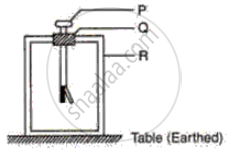Advertisements
Advertisements
Question
How electric current flows in liquids?
Solution
Flow of electric current in liquids: Within a liquid no electrons move. However, when a negatively charged and a positively charged electrodes are placed in a liquid, it sets up an electric field.
Under the influence of the electric field, the positively charged ions migrate towards the negatively charged electrode and vice versa.
At the cathode, the positively charged ions gain electrons. At the anode the negatively charged ions lose same number of electrons.
Thus, in a way number of electrons given by the cathode is equal to the number of electrons accepted by the anode. The sum up, we can say that simultaneous movement and discharge of positive and negative ions in the opposite directions constitute the current in the liquids.
APPEARS IN
RELATED QUESTIONS
On increasing the resistance in a circuit, the current in it :
A current 0.2 A flows in a wire of resistance 15Ω. Find the potential difference across the ends of the wire.
The following Figure represents a negatively charged gold Ieaf electroscope. Label the parts, P, Q, and R and the estate whether each is an insulator or a conductor. Also, indicate the distribution of charges on the system in the diagram.

Write SI unit of
Electric current,
What is the function of a switch in an electric circuit?
What do you mean by the potential difference? Write its SI unit.
